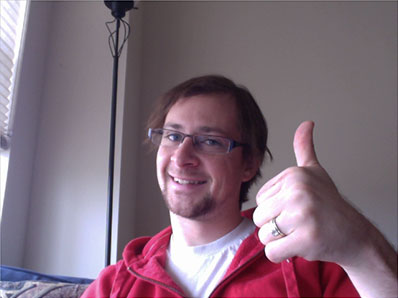Using MooTools’ Alias Functionality
Not having internet at home for a month gave me a great opportunity to really study the MooTools core JavaScript file. One fun part of the library is its alias() functionality. Alias allows you to do exactly what the word means -- alias one functionality by calling it something else. For example, one usage of alias in the library is:
Hash.alias('forEach', 'each'); //Hash iteration
Array.alias('forEach', 'each'); //Array iteration
Using "each" is shorter and faster to type than "forEach." With aliasing in mind, I thought of a few fun usages of MooTools' alias. All of the following are aliases for the Element.dispose() functionality:
/* prison house */
Element.alias('dispose', 'shank');
$('prisoner').shank();
/* animals */
Element.alias('dispose', 'beach');
$('whale').beach();
/* automobiles */
Element.alias('dispose', 'compound');
$('car').compound();
/* mafia */
Element.alias('dispose', 'concreteShoes');
$('wiseguy').concreteShoes();
In all seriousness, I recommend using alias when you want to refer to a specific functionality by giving it your own name.





Great functionality and funny too..!!
So I just got in trouble in a study hall for laughing out loud at
"$('prisoner').shank();". That’s hilarious.Quite funny actually! But how much is this slowing JavaScript down, as it has to go an extra step to check what the function is an alias for?
I never knew that alias existed! I’ve always wanted a short version for domready. Could alias handle that or would be better to just extend Window?
@Ronny-André: The speed difference must be slim to none. MooTools uses ‘.each’ everywhere.
@Ryan: I don’t believe that alias would be applicable to your example.
This got a chuckle out of me. The .shank example was choice.
@Ryan, alias just creates an extra pointer to a method, so it doesn’t work with events.
@Ronny-Andre David is correct; the expense here is nil. It doesn’t invoke some methodology every time you call .each or anything. The alias function just applies it’s logic when it is parsed and after that you have two pointers to the same method.
As for using this to create your own fun names for things, you certainly could. I think that a far more powerful method for creating your own functionality for native elements is the custom methods that MooTools allows you to define. For instance, look at the element shortcuts in Fx.Tween:
Element.implement({ //there are other shortcuts, but let's just look at highlight... highlight: function(start, end){ if (!end){ end = this.retrieve('highlight:original', this.getStyle('background-color')); end = (end == 'transparent') ? '#fff' : end; } var tween = this.get('tween'); tween.start('background-color', start || '#ffff88', end).chain(function(){ this.setStyle('background-color', this.retrieve('highlight:original')); tween.callChain(); }.bind(this)); return this; } });Using implement (combine with element storage) you can create a lot of customized behavior. For instance, let’s say you liked jQuery’s method for adding click events.
Damned formatting. I indented that crap!
Note that the parameters have been reversed in newer Mootools (using 1.3.2) versions :
Element.alias('shank', 'dispose');
Element.alias('concreteShoes', 'dispose');
etc.